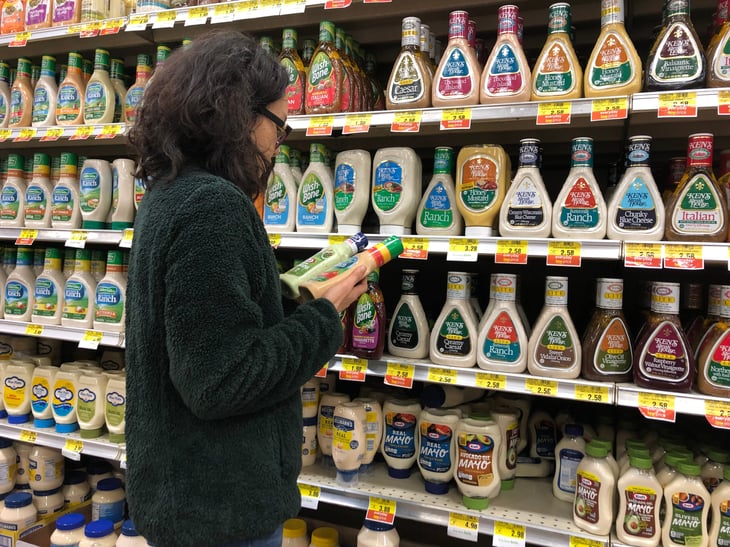
Many grocery items have soared in price as inflation has run rampant throughout the U.S. economy. That means folks on tight budgets are having a tougher time paying for the foods they need.
Fortunately, there are things you can do to trim your grocery tab, even when prices are generally rising.
Don’t overlook the following easy — but frequently forgotten — ways to cut the cost of grocery shopping.
1. Ask for a rain check

Sometimes, you might find that a grocery item offered at a great sale price is out of stock. Rather than leaving the store disappointed, ask for a rain check so you can nab the deal at a later time.
2. Shop at multiple grocery stores

Most grocery stores sell “loss leader” items. These are foods that are deeply discounted in hopes of getting shoppers through the door: Grocers are willing to lose money on a handful of foods in hopes of making it up elsewhere.
However, you can spin this concept to your own advantage by shopping at two or three grocery stores and stocking up on loss leaders at each retailer.
Keep in mind that this trick works best if the grocery stores are clustered in the same area. Driving halfway across town simply to save a few dollars is no bargain, especially when you consider the time involved and the gas you burn.
3. Buy organic store brands

Just about everybody knows that buying generic versions of standard grocery foods can save you money. But not everyone realizes that stores sometimes sell organic foods in generic form.
Examples of organic store brands include:
- Aldi — Simply Nature
- Kroger — Simple Truth Organic
- Safeway — O Organics
- Meijer — True Goodness
- Whole Foods — 365 Everyday Value
4. Join a community-supported agriculture (CSA) farm

Joining a local community supported agriculture network will earn you regular deliveries of locally grown farm products. You pay to become a member, but you might find it’s a money-saver compared with what the local grocery store charges.
Deliveries typically arrive on a weekly basis, although some farms offer other schedules. For some CSAs, members pick up food rather than having it delivered. The U.S. Department of Agriculture’s website can help you find a local CSA.
5. Shop on Wednesdays

Frugal types know that experts often suggest shopping for groceries on Wednesdays. That is because many retailers restock shelves on that day and mark down older items to get them out of the store.
Is that true at your favorite supermarket? The only way to find out is to shop on a few consecutive Wednesdays and see if you save. If you do find a lot of deals, you will have discovered your new favorite day for a grocery-store run.
6. Skip eye-level items

When it comes to marketing their goods, grocers are nobody’s fool. They tend to place more expensive items at eye level on store shelves in hopes of getting you to quickly focus on — and eventually buy — these premium-priced items.
To save a buck, look higher and lower on store shelves, where the real bargains are likely hiding.
For more on grocers’ sneaky ways, check out “7 Tricks Grocery Stores Use to Make You Spend More.”
7. Use discounted gift cards

Purchasing and using discounted gift cards at your favorite grocer is a great way to cut your costs. Websites such as Raise let you buy gift cards at less than face value. You can also sell unwanted gift cards there.
Of course, free gift cards are even better. For tips on snagging those freebies, read about the “12 Ways You Can Get Gift Cards for Free.”
8. Shop at salvage stores

Salvage grocery stores sell foods with scratch-and-dent packaging or goods that are near their “sell-by” date. Typically, you can save big bucks by purchasing these items.
Websites such as Buy Salvage Food can help you find a salvage grocer in your area.
For more, check out “How to Beat High Food Costs at ‘Salvage’ Grocery Stores.”
